-
Why we love it
The smell of centuries-old olive trees is mixed gently with the salt of the sea in a riot of emotions. The slowness of the journey that even the most skeptical to experience a new kind of tour where the fun and learning are the masters. - Travelling time: 8 hours
- Difficulty: Easy
- Length: 16 km
- Total Elevation Gain: 10 m
- Way to travel: By bike
- Cost: 0 €
- Our Advice: The route, despite the distances, it runs smoothly with comfortable urban bike regularly provided by the organization. During spring-summer particularly sunny it recommends wearing a hat with a visor and a pair of sunglasses. Also take along your sunscreen and your camera to capture the beauty of these places. Periods of longer-distance shown are from March to June and from September to November, this is because the weather conditions at other times, for different reasons, do not tend to be favorable.The periods indicated are traveling more from March to June and from September to November, this is because the weather conditions at other times, for opposite reasons, tend not favorable.
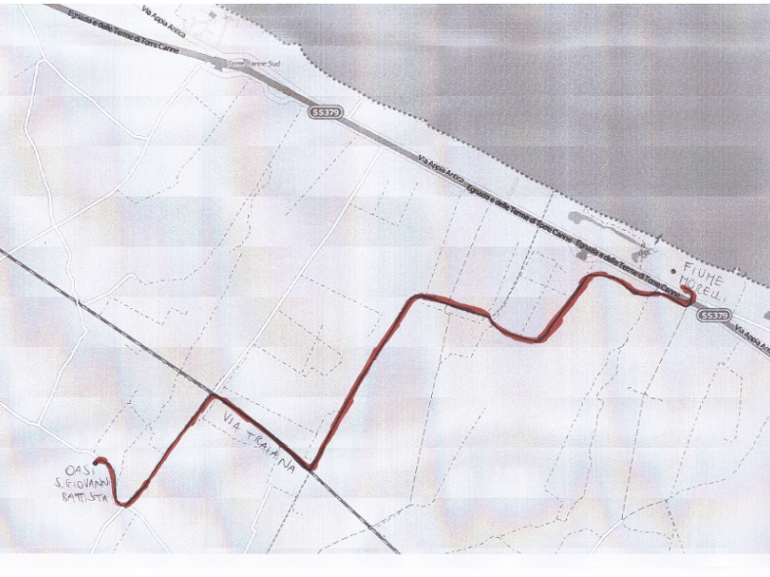
Our cycle tour starts from the farm Oasi San Giovanni Battista (in Fasano Montalbano province of Brindisi), an ancient fortified farm dating back to 1600 now a sustainable rural hospitality.
It still retains the old mill with millstone, presses and tanks for oil collection; also it has a nice church built in the early eighteenth century dedicated to Our Lady of Madia patron of Monopoli.
After riding the bike gently concesseci from the farm, we put in that ancient thoroughfare that crosses the whole plain olive grove around the park, united Brindisi to Benevento: the Traiana road.
This commercial crossroads that favored the development of agricultural land tells only part of which and how many peoples and civilizations inhabited the area etched leaving tangible signs of their passage.

The cultural deposits found there, from Roman and medieval underground presses the system of farms, the rock settlements to the many places of worship coming up wall art of dry stone walls, are evidence that the mix of cultures temporally distant from each other, has It generated a historical, landscape, cultural and economic very varied that went sedimentandosi and enriched over time.
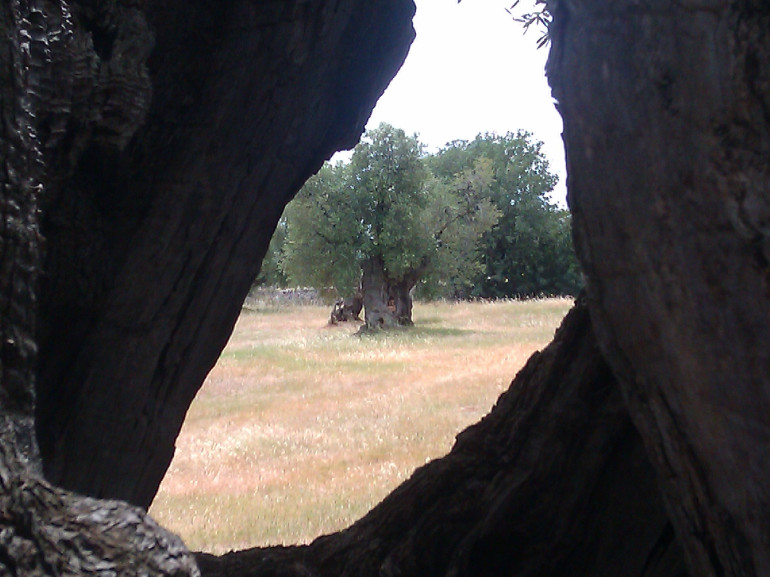
Continuing in the streets plowed once used by merchants, one is bewitched by the sinuous, elegant, by the multiplicity of strains present in the homonymous plain olive. The pungent smell issued from their imposing and thick foliage blends the salty sea that, lulled by a slight mistral, dates back to the valley.
The concavity of their majestic barks is due to the fact that, crawling with parasitic bacteria (the Xylella is a typical example), the inside of the cortex itself is burned so as to prevent their proliferation.
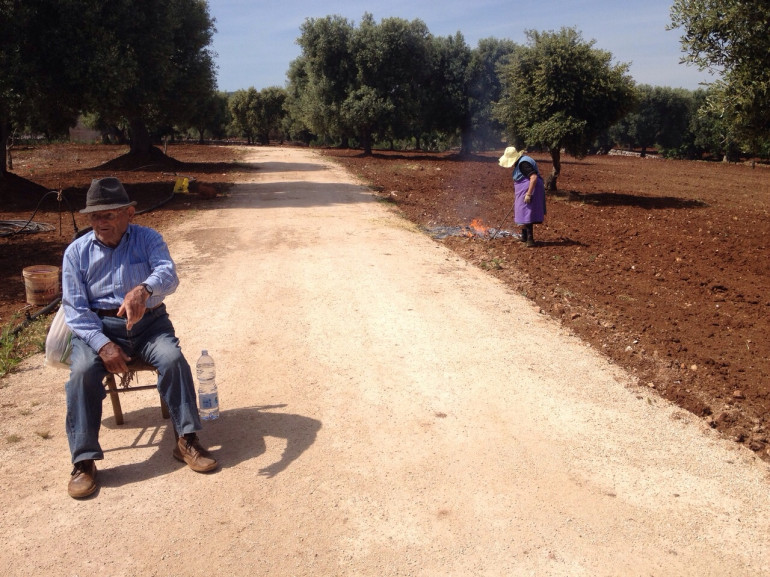
If today the Park coastal dunes can claim the title of Regional Natural Park of the merits should be attributed to the ability of farmers who were able to pass over time the value derived from the protection of these goods agro-naturalistic.
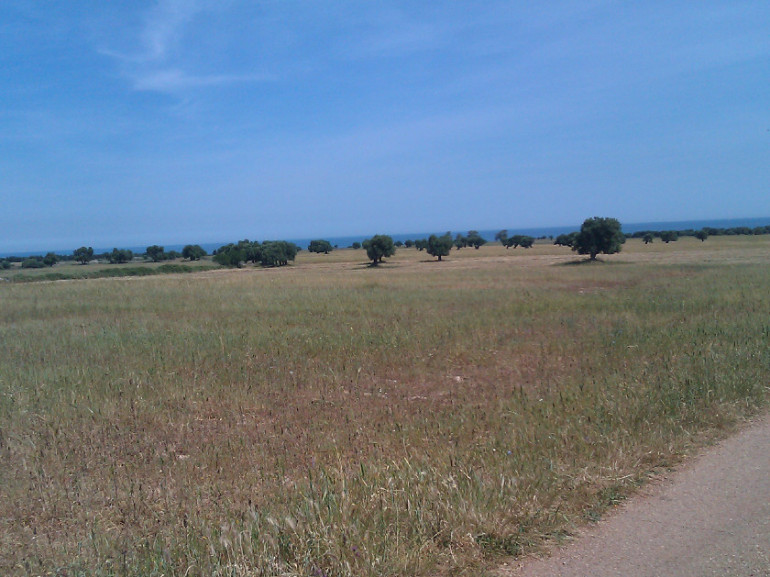
Once lasciatasi behind the plain olive grove, to the rhythm of pedaling slow and aware, you reach the area of cultivation of wheat Senatore Cappelli, a type of wheat from the early '900, the period in which the eponymous senator promoted a reform Agrarian able to distinguish those big hard soft.
The plant is unique genetic because, despite his height (which on average reaches about 180 cm), no curvature typical of the setting and also has never undergone genetic alterations. Making it an excellent product not only of the park area but nationally. Among its extraordinary properties, to exterminate weeds present on its root system makes of it a type of plant that is well suited to the biological cultivations, since it does not require the use of fertiilizzanti nor of herbicides.

Crossing a short stretch of paved road you are easily reached what is the largest wetland area and wetland park with four ponds with fresh water, the wetlands of the Morelli river.
The area once above sea level saw the origin of these wetlands because of the permeability of the karst terrain rich in limestone that favored the creep of rainwater into the ground.
Morelli are located behind the dunes in different types of Mediterranean salt steppes including reeds, salicornia and rushes in the vicinity of which have survived centuries-old junipers that constitute a habitat now rare in the Mediterranean, and for this declared EU priority.
To safeguard a riverine vegetation so varied has set up a monitoring system to regulate the flow of the river in order to prevent the drying and at the same time avoid the risk of flooding that would undermine the ecosystem "plane".
You can admire in different periods of the samples of honey buzzards, kingfishers, herons that during migration, swoop on the river looking for prey.
In aquaculture facilities present time it caught mullet through the obsolete method of trawler, and eels today fished with fish traps.
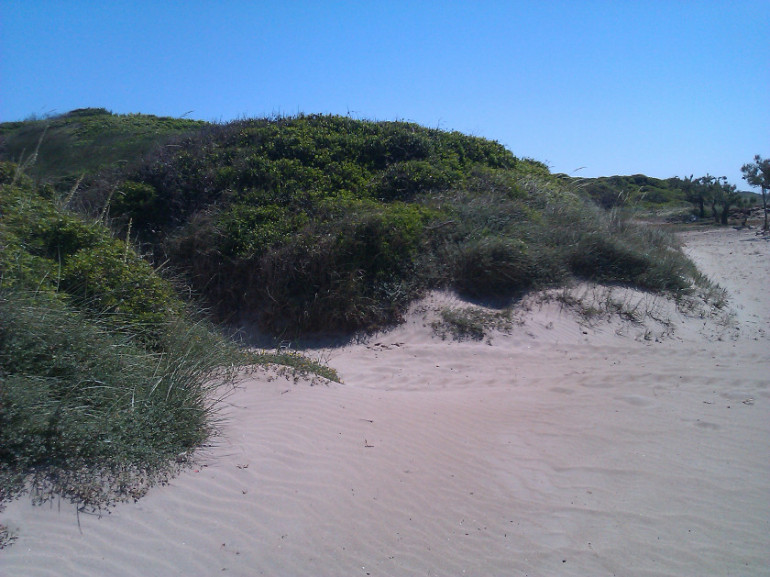
The beaches, composed of fragments of shells of organisms, have a blackish color due to the debris of volcanic origin, rich in oxides and iron, coming from the volcano Vulture.If the temperatures allow it, do not miss the chance to live the experience of a bathroom in the picturesque setting of the coastal dune.

The cycle tour in the Park coastal dunes, guardian of environmental treasures, historical and natural, ends with the return to the farm Oasis San Giovannni Battista.After relaxing in a bath you dive again but proceeding towards the hinterland. From there, via a circular route, retracing backwards environments of dunes, wetlands behind the dunes, groves until you arrive at what is the largest testimony has come down the "megalithic civilization": the Dolmen of Montalbano. The megalithic monument, dating back to the Bronze Age (II millennium B.C.), consists of two vertical stone slabs supporting a horizontal serving as roof. The integrity prevailing in suggests that, despite the succession of peoples and civilizations, the Dolmen has always been identified as a place of worship and as such depositary of an aura of respect.

The cycle tour in the Park coastal dunes, keeper of treasures environmental, historical and natural, ends with the return to the farm Oasis San Giovannni Battista.
Author: Pietro Musso
Cover Image by Pietro Musso
